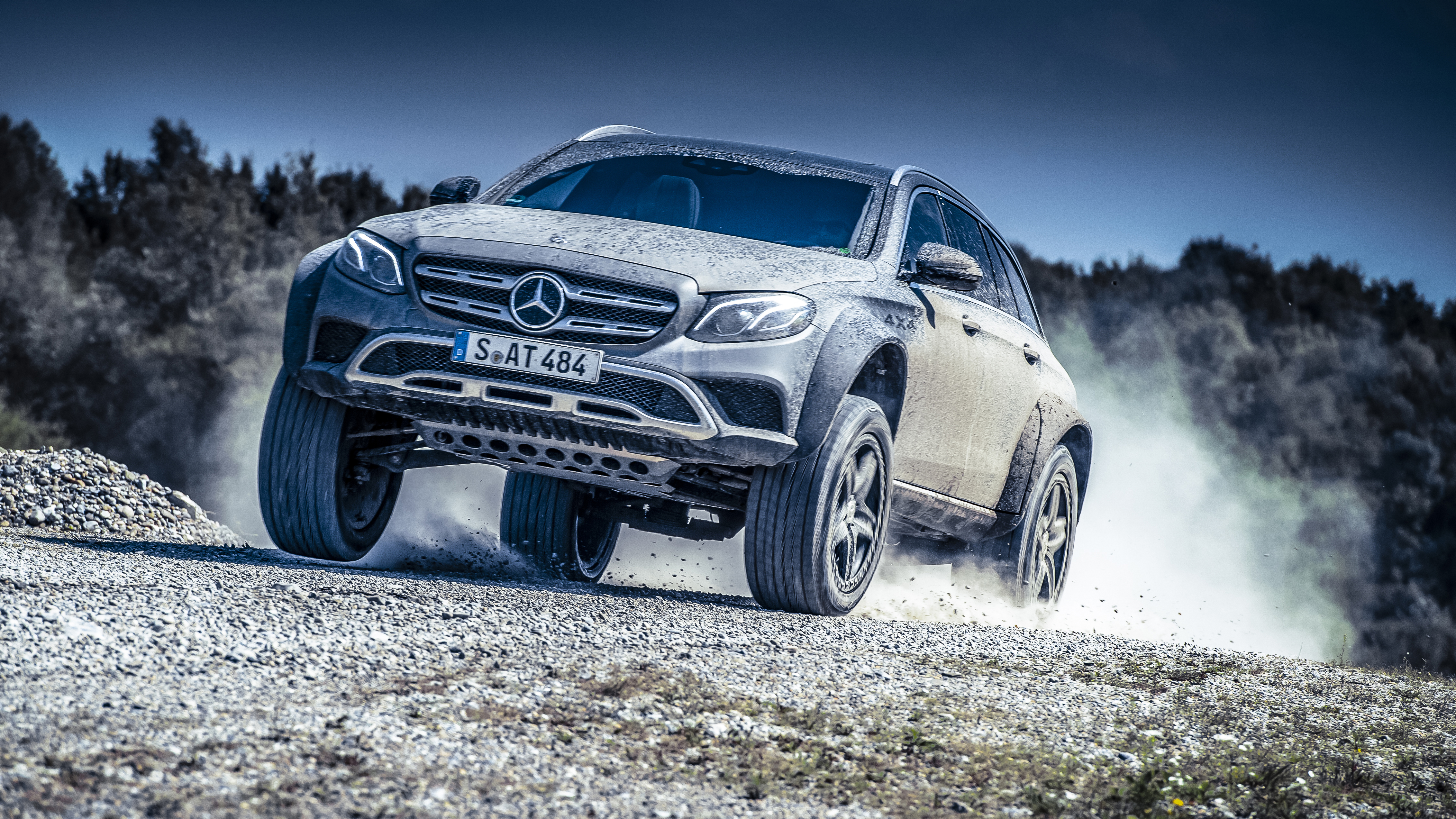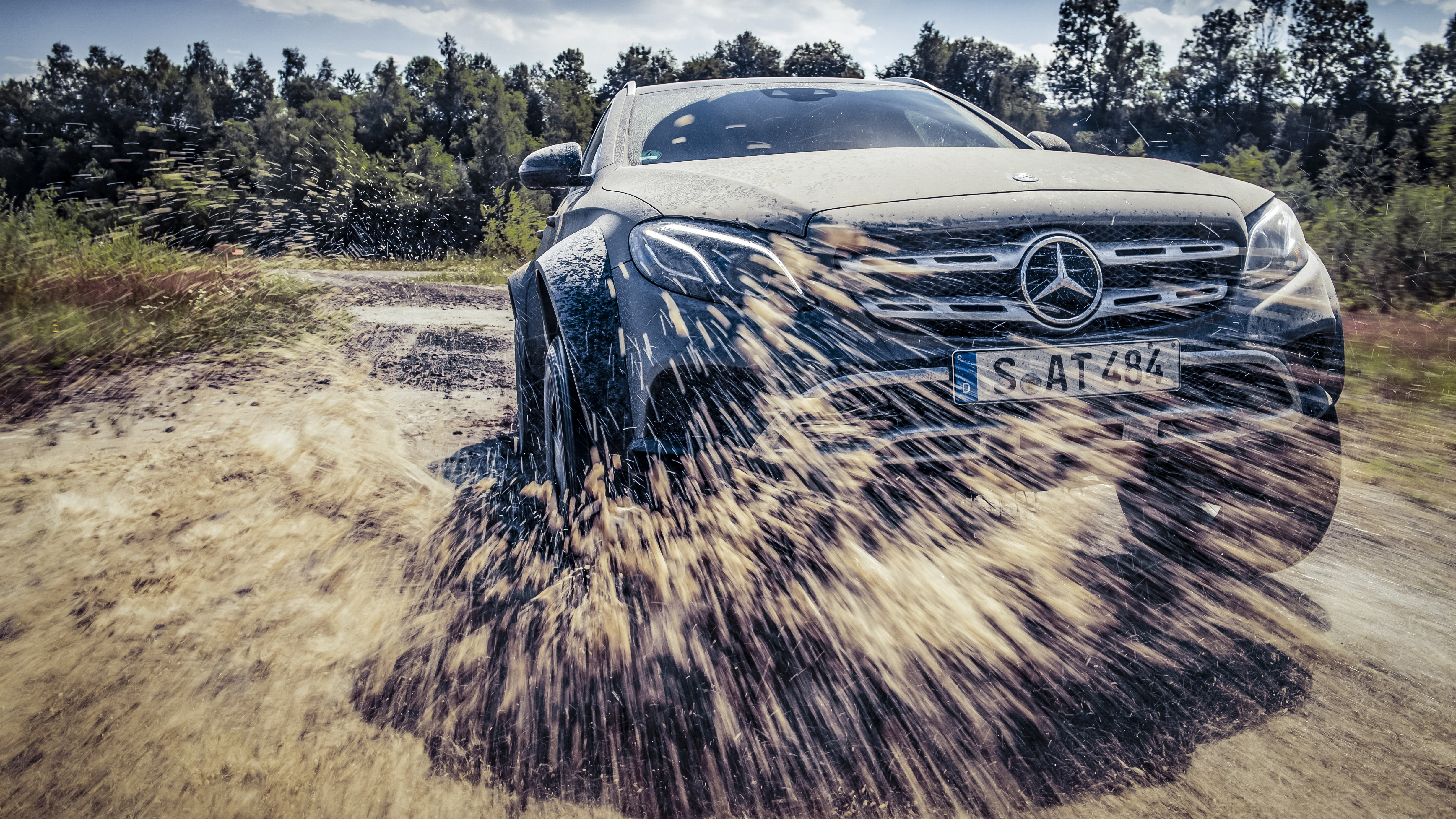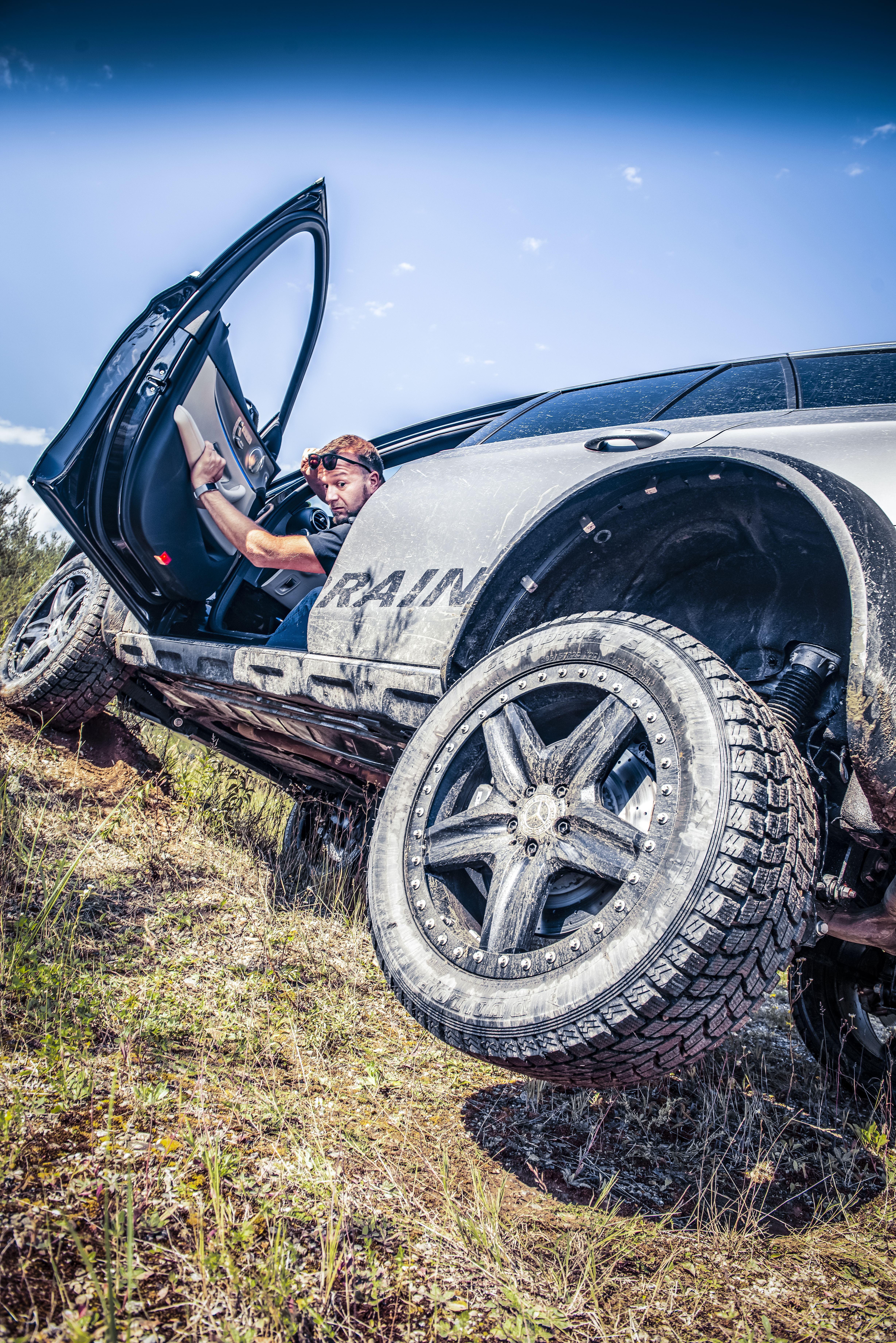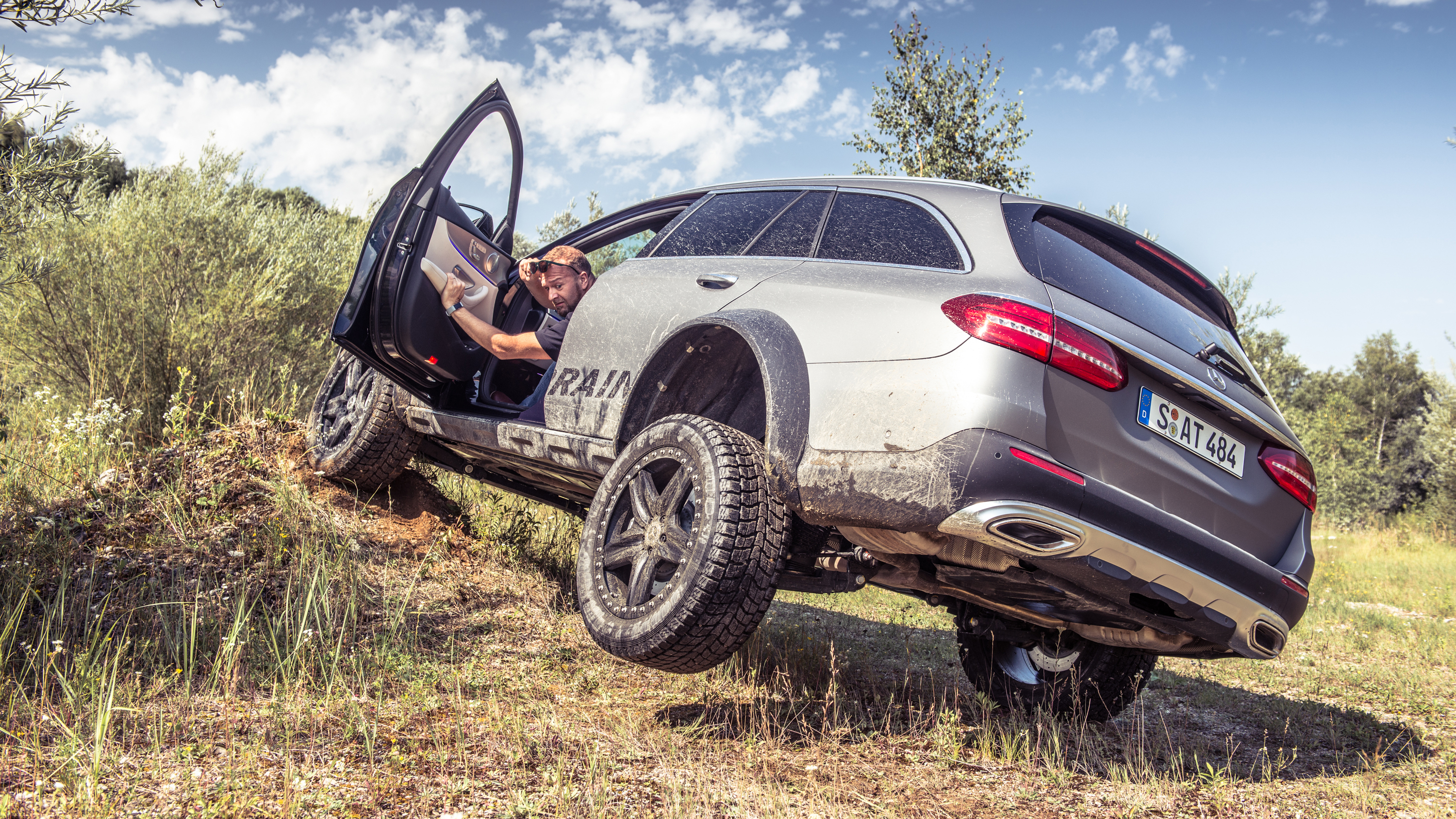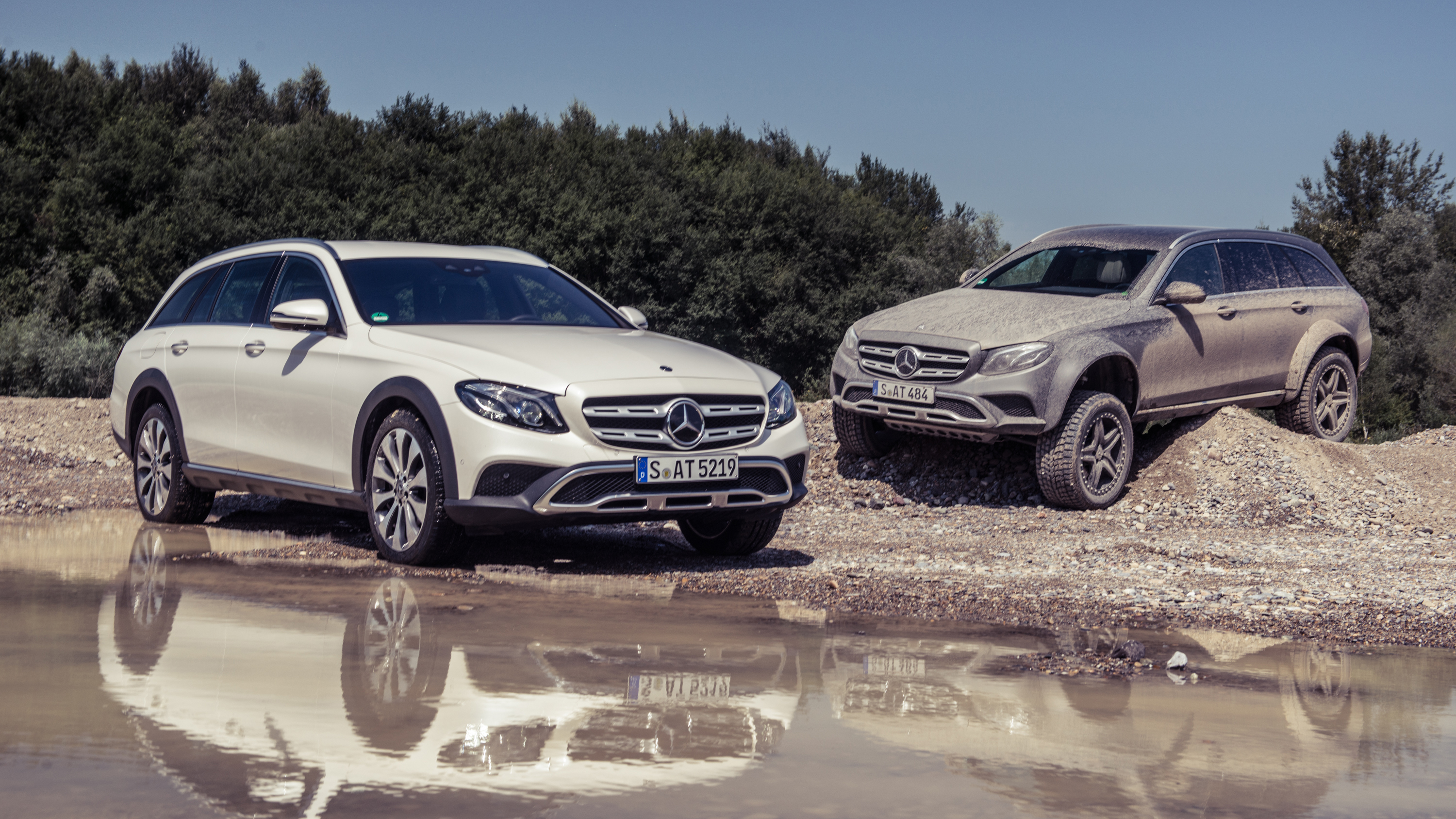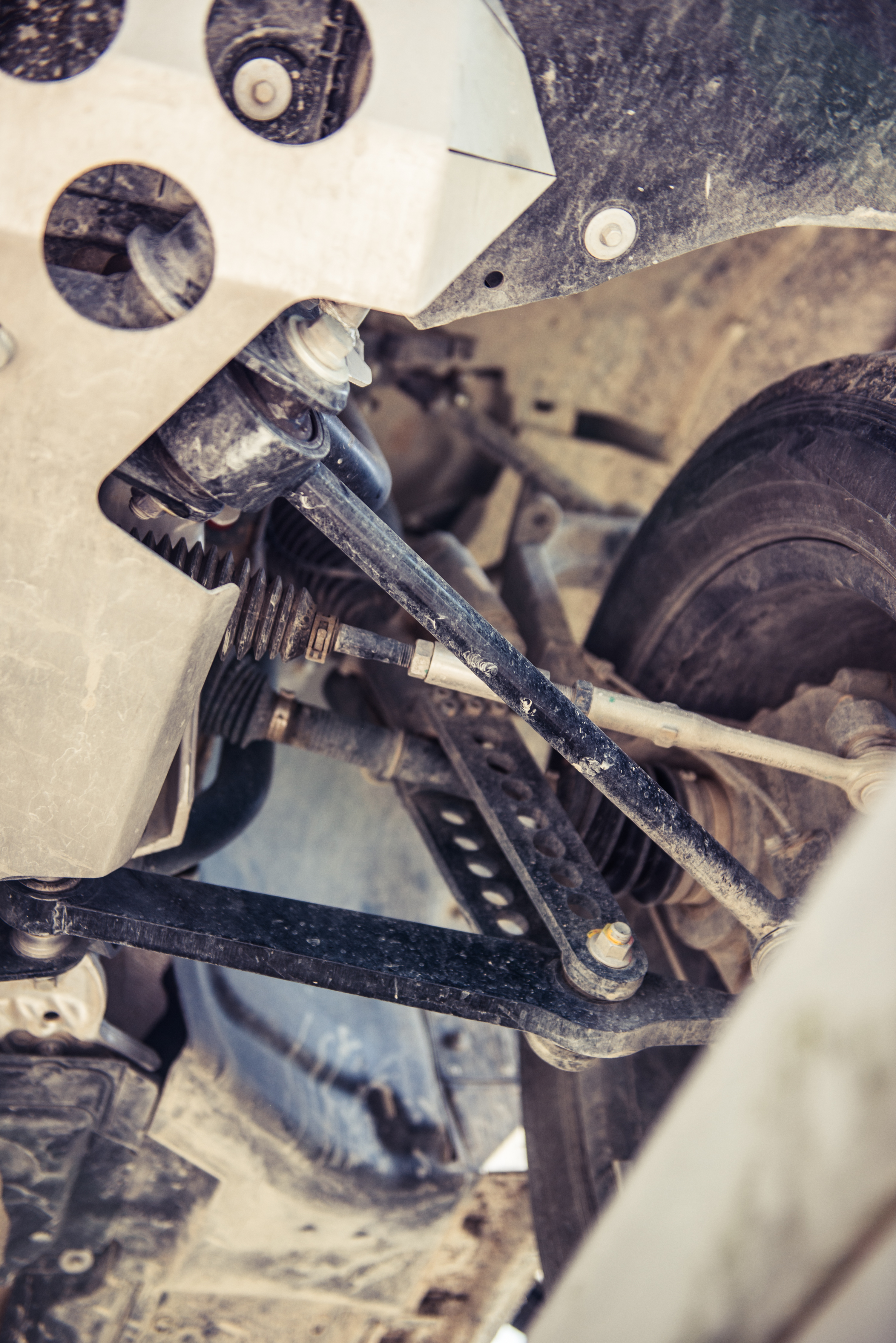
Off-roading in Mercedes' crazy E-Class 4x4²
What happens when Merc's most extreme E-Class meets TG's most extreme journalist?
Imagine the scene: Jürgen Eberle shows up to work one morning as an engineer at Daimler AG, ready to do his usual engineering job as the man who makes sure that all the stuff that is supposed to fit in the front of a Mercedes-Benz E-Class – the electronics, headlights, cooling and all that important stuff – actually fits in the front of an E-Class. On his way to his office, he spots a G-Wagen 4x4² – the one with the portal hubs instead of a traditional axle set-up. And he starts thinking. Possibly muttering something along the lines of “Ich frage mich, ob...” The words “I wonder if…” that – when uttered by an engineer of any stripe – invariably lead to bent bits of metal and complicated drawings that involve maths. Essentially it’s the PhD engineering equivalent of “Hold my beer.”
Words: Tom Ford
Photography: Rowan Horncastle
Jürgen, you see, is an avid off-roader. He loves things like portal-geared hubs. Jürgen is also an E-Class engineer, who had been working on the new E-Class All-Terrain. You can see where this is going. Thing is, portal axles (hubs, gearsets, whatever you want to call them), do not fit on a new E-Class All-Terrain. Or they didn’t until Eberle started chewing his metaphorical pencil and busted out the tape measure.
Because what you see here is a Mercedes-Benz E-Class All-Terrain running a full set of 1:1 portal hubs. An E-Class All-Terrain 4x4², if you will. A culture-clash of luxury estate and hardcore off-roader, or natural extension of the All-Terrain brand, depending on how you look at it. Go-somewhere converted to go-anywhere. A kind of hulked-out, adventure-ready action mobile without the chest-beating testosterone of a full-house SUV. Or not all of it, anyway. But what it isn’t, is particularly easy. Mainly because of what a portal hub is designed to do. You see, a portal axle isn’t really an axle at all, but a triplet of gears mounted inside a hub that extends up and away from the centre line of the driven wheel and negates the need for a traditional differential. Thus, you can tuck all the dangly bits away and have the drive system not sitting in-line with the wheel centres. Bingo, more ground clearance and – if you feel the need – reduction gears within the hubs for extra-low crawling. But they’re designed for off-roaders, not luxury estates with multi-link axles. Which is where Jürgen comes in.
“Just getting on with it worked,” he says about making something so… strange actually happen. “I submitted a plan to the bosses, and they just allowed me to try.” Although with a little more digging, it wasn’t just a casual napkin sketch, more of a full CAD design of why the vehicle was more than just a flight of fancy. And he wasn’t without help. “Having the network is the crucial factor. There were a number of occasions when it would have been much easier to give up on the project than to keep going. But in every area where I needed support, I found colleagues who ticked in a similar way and who provided help quickly and without red tape.”
Without red tape? At a company the size of Daimler?
And yet, the adoption of clever engineer’s skunkworks tendencies tend to yield the best results; just look at how the VW Golf GTI first came into being in ’76. Indeed, the process involved collaboration with several – about 20 – similarly enthusiastic engineers from around the Daimler family. One 3D-printed that set of steroidal arches, though they were such large items that they’re actually printed in three parts and then plastic-welded together, filled and painted. Another hand-fabricated the custom subframes for the portals, designed to bolt onto the original E-Class suspension mounting structures, and yet another handmade the driveshafts. Indeed, there are plenty of adapted, remade and scavenged parts from all over the Mercedes portfolio – the wheels are stolen from the R-Class cetacean-spec SUV, and come shod in 285/50/R20 winter tyres, there are bits of GLA suspension underneath, and even friends at AMG had a hand in essential items.
In fact, this thing should realistically feel like a horribly wonky prototype. But it simply doesn’t. Far from being a design-led lash-up, you can tell from the very first moment that this is a car built by engineers, rather than designers. Yes, it’s a bit of a finagle getting up into an E-Class cabin rather than down, but once you’re in, it just feels like a levitating E. Everything works – from massaging seats to the various modes for the still-functioning Air Body Control air suspension, and all the cues from the inside are that you’re still driving a standard luxury estate. Power from the turbo E400 V6 is perfectly adequate – rapid, even – and the nine-speed ’box doesn’t shunt or thump, even with those oversized tyres. Yes, it’s a bit hit’n’miss in terms of spatial awareness, because the extremities of the car are basically random unknowns, and you have to play cautious in traffic because the car has a brawny track width (1,772mm at both ends), as well as having an extra 200mm of width entirely in those arches (it’s 2.1 metres wide, all told). It really is quite big, too. At 420mm, the E-AT² has a fair bit more ground clearance than the standard All-Terrain (160mm), and isn’t far off the wading depth of an actual G-Wagen (500mm plays 600).
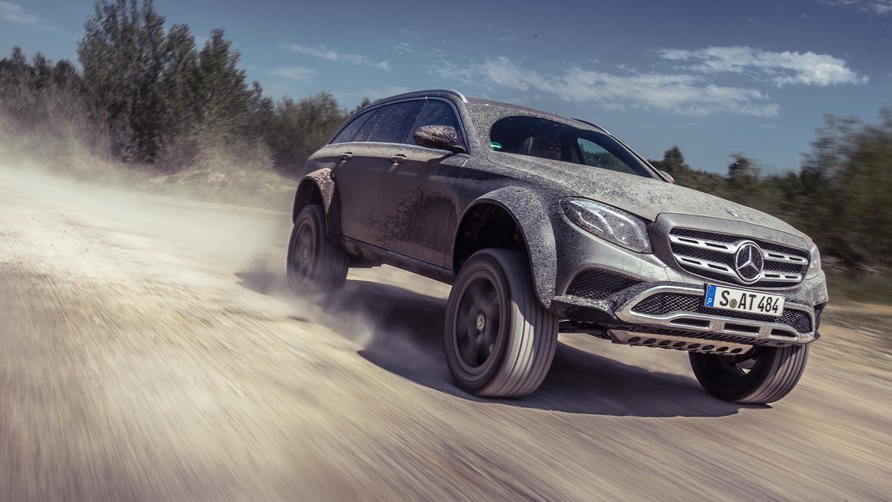
What all that stuff gives you is lightly unstoppable off-road progress. We drove it through small rivers, up hill tracks you’d struggle to walk up, through mud, ditches, sideslopes, across several fields and into a small town. And the town stuff was the most hassle, simply because parallel parking the thing is more like trying to dock a ship. The off-tarmac stuff is most impressive, because when off-roading, the things most likely to get you stopped are approach and departure angles, ground clearance and traction. The E-AT² has a surfeit of all of it. In fact, the only thing likely to stop it is a cross-axle ridge, simply because the car doesn’t have either a set of locking differentials or the appropriate GL-alike electronics to fake them. But Jürgen assures me that the appropriate electronic programming is perfectly possible – it just wasn’t cost-appropriate on a “prototype”. Ah yes, the “prototype” bit. This doesn’t feel like a lash-up, and given that there are plenty of people out there whose car purchases are based entirely on the notion of having something very few other people own, I’d say that you could reasonably expect a limited run of these things in the near future. All it’d take are a few electronic tweaks and it’d work perfectly. And it’s brilliantly bizarre.
But what’s better is that Daimler and Mercedes realise how important these backroom projects really are. Letting your engineers fly their fancies every now and again helps build a company’s profile as somewhere creative and energetic – which is important if you want to employ engineers with the same characteristics. And sometimes, cutting loose a little bit creates interesting, special cars that capture the imagination. The E-AT² is one of them.
Top Gear
Newsletter
Thank you for subscribing to our newsletter. Look out for your regular round-up of news, reviews and offers in your inbox.
Get all the latest news, reviews and exclusives, direct to your inbox.
More from Top Gear
Trending this week
- Car Review
BMW 1 Series




